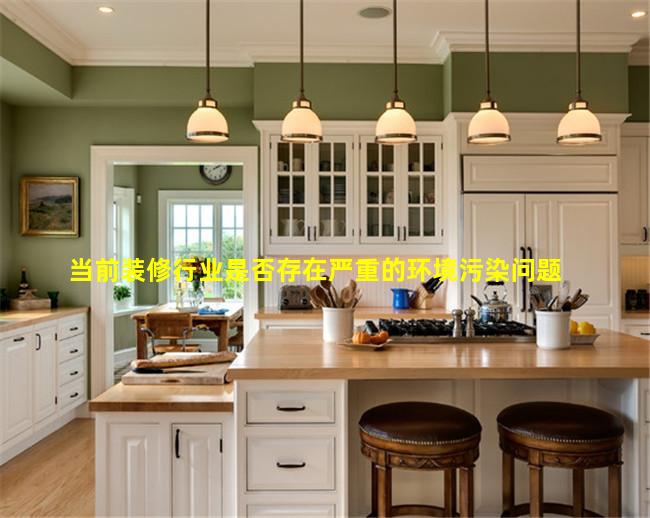





当前装修行业确实存在一定程度的环境污染问题,主要体现在以下几个方面:
1. 材料污染:装修过程中使用的某些材料,如油漆、胶粘剂、板材等,可能含有甲醛、苯、TVOC(总挥发性有机化合物)等有害物质,这些物质在装修后会逐渐释放到室内空气中,造成室内空气污染。
2. 施工污染:装修施工过程中会产生大量的粉尘、噪音和废弃物,这些不仅影响施工现场的环境,也可能对周边环境造成影响。
3. 废弃物处理:装修产生的废弃物,如废旧建材、包装材料等,如果处理不当,可能会对环境造成污染。
4. 能源消耗:装修过程中需要使用电力、水等资源,如果管理不善,会造成能源的浪费。
为了减少装修行业的环境污染,可以采取以下措施:
- 使用环保材料:选择低甲醛、低VOC的装修材料,减少有害物质的释放。
- 加强施工管理:合理安排施工时间,减少噪音和粉尘的产生,妥善处理施工废弃物。
- 推广绿色装修:鼓励使用可再生、可循环利用的材料,减少对环境的影响。
- 提高能源效率:合理规划施工流程,减少能源消耗。
中国政府也在积极推动绿色建筑和绿色装修的发展,出台了一系列政策和标准,如《绿色建筑评价标准》、《室内空气质量标准》等,以规范装修行业,减少环境污染。同时,消费者也越来越重视室内环境质量,倾向于选择环保、健康的装修方案。
The current state of environmental pollution in the construction industry is a significant concern. The industry is known for its high consumption of natural resources, generation of waste, and emission of pollutants. This essay will discuss the various aspects of environmental pollution in the construction industry and suggest some potential solutions.
Firstly, the construction industry is a major consumer of raw materials such as timber, steel, and concrete. The extraction and processing of these materials often lead to deforestation, soil degradation, and water pollution. Moreover, the transportation of these materials contributes to air pollution and greenhouse gas emissions.
Secondly, the construction process itself generates a substantial amount of waste. This includes construction debris, such as bricks, wood, and metal, as well as hazardous waste from paints, solvents, and adhesives. Improper disposal of these wastes can contaminate soil and water resources, posing risks to both human health and the environment.
Thirdly, the use of heavy machinery and vehicles in construction contributes to air pollution. These machines emit pollutants such as nitrogen oxides, sulfur dioxide, and particulate matter, which can have detrimental effects on air quality and public health.
To address these issues, several measures can be taken. Firstly, the industry can adopt sustainable practices such as using recycled materials, reducing waste, and improving energy efficiency. For example, using recycled concrete in new construction projects can reduce the demand for virgin materials and minimize waste.
Secondly, the industry can invest in cleaner technologies and practices. This includes using electric or hybrid vehicles, implementing dust control measures, and using low-emission construction equipment.
Lastly, regulatory frameworks and standards can be strengthened to ensure that construction activities are conducted in an environmentally responsible manner. This includes enforcing waste management regulations, setting emission standards for construction equipment, and promoting green building certifications.
In conclusion, the construction industry does face significant environmental pollution challenges. However, by adopting sustainable practices, investing in cleaner technologies, and strengthening regulations, the industry can mitigate its environmental impact and contribute to a more sustainable future.

当前装修行业确实存在一些环境污染问题,这些问题主要体现在以下几个方面:
1. 材料污染:装修过程中使用的某些材料,如油漆、胶粘剂、板材等,可能含有甲醛、苯等有害物质,这些物质在装修后会持续释放,对人体健康造成威胁。
2. 施工污染:装修施工过程中产生的粉尘、噪音、废水和废气等,对周围环境和居民生活造成影响。
3. 废弃物处理:装修产生的废弃物,如旧家具、建筑垃圾等,如果处理不当,会对环境造成污染。
针对这些问题,可以采取以下对策:
1. 推广环保材料:鼓励使用低挥发性有机化合物(VOC)的油漆、无甲醛或低甲醛的板材等环保材料,减少有害物质的释放。
2. 加强施工管理:规范施工流程,采取有效措施控制粉尘、噪音和废气的排放,如使用封闭式施工、安装吸尘设备等。
3. 合理处理废弃物:建立健全装修废弃物回收体系,对可回收材料进行分类回收,对不可回收的废弃物进行无害化处理。
4. 提高公众环保意识:通过教育和宣传,提高公众对装修环保的认识,鼓励消费者选择环保装修材料和服务。
5. 政策法规支持:政府应出台相关政策和法规,对装修行业的环保标准进行规范,对不符合环保要求的企业进行处罚,推动行业健康发展。
通过这些措施的实施,可以有效减少装修行业对环境的污染,保护人们的健康和生态环境。
装修行业面临的威胁主要包括以下几个方面:
1. 市场竞争加剧:随着装修市场的不断扩大,越来越多的企业进入这一领域,导致市场竞争日益激烈。小型和中型装修公司可能会因为缺乏竞争力而面临生存压力。
2. 原材料价格波动:装修行业对原材料的依赖性很强,如木材、钢材、水泥等。原材料价格的波动会直接影响装修成本,从而影响企业的利润。
3. 劳动力成本上升:随着社会经济的发展,劳动力成本不断上升,尤其是在一线城市。这导致装修企业的运营成本增加,利润空间被压缩。
4. 环保法规的加强:随着环保意识的提高,政府对装修行业的环保要求也越来越严格。企业需要投入更多资金用于环保设施和技术的升级,增加了运营成本。
5. 消费者需求多样化:现代消费者对装修风格、材料、功能等方面的需求越来越多样化,这对装修企业的创新能力和服务水平提出了更高的要求。
6. 技术变革的挑战:随着科技的发展,新的装修技术和材料不断涌现,如智能家居、绿色建材等。装修企业需要不断学习和适应新技术,否则可能会被市场淘汰。
7. 经济波动的影响:宏观经济的不稳定,如房地产市场的波动、经济危机等,都会对装修行业产生影响,导致市场需求的不确定性增加。
8. 法律法规的变化:政府对建筑行业的法律法规不断更新,如建筑标准、安全规范等,装修企业需要不断适应这些变化,以避免法律风险。
为了应对这些威胁,装修企业需要不断提升自身的竞争力,包括提高服务质量、降低成本、加强技术创新、关注环保法规、适应市场变化等。同时,企业还需要建立灵活的运营机制,以快速响应市场和政策的变化。